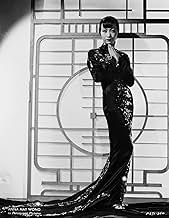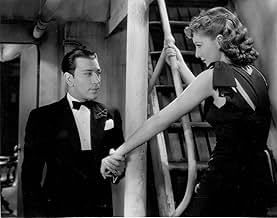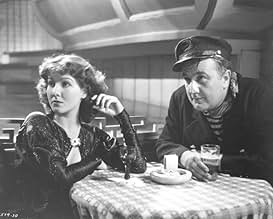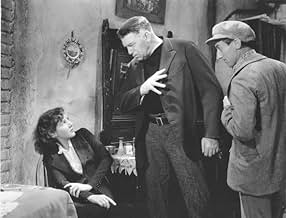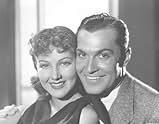Fresh from Chinatown in New York, Harry Young has taken over the illegal import business in the seedy Limehouse district of London, where he cold-bloodedly disposes of rivals and runs a smok... Read allFresh from Chinatown in New York, Harry Young has taken over the illegal import business in the seedy Limehouse district of London, where he cold-bloodedly disposes of rivals and runs a smoky nightclub. He falls for a low-class white pickpocket, diminishing his pride in the Chine... Read allFresh from Chinatown in New York, Harry Young has taken over the illegal import business in the seedy Limehouse district of London, where he cold-bloodedly disposes of rivals and runs a smoky nightclub. He falls for a low-class white pickpocket, diminishing his pride in the Chinese half of his heritage and sparking the jealousy of the nightclub's moody star performer.
- Herb
- (as Billy Bevin)
- Policeman
- (uncredited)
- Passerby at Murder Scene
- (uncredited)
- Slummer
- (uncredited)
- Wife
- (uncredited)
- McDonald
- (uncredited)
- Minor Role
- (uncredited)
- Minor Role
- (uncredited)
Featured reviews
It starred George Raft as Harry Young, a half-Chinese, half-white man who was a criminal who immersed himself in Chinese culture and customs until he got stuck on an American girl named Toni (Jean Parker). He spent great efforts trying to impress her and make her love him, and in return she fell in love with a pet shop manager named Eric Benton (Kent Taylor).
As for Ann May Wong, she was largely in the background brooding over the fact that Harry was in love with a white woman.
There wasn't a whole lot to this movie, and George Raft was a sub-par actor no matter what he was in.
Free on Odnoklassniki.
In a typical role for the "dark & dangerous" Paramount star George Raft, he's a bad guy with a good heart who does a complete about face in the last reel and it was more-or-less the same 'ol same 'ol for the exotic Wong as well. She does little more than shoot daggers with her eyes at pretty Jean Parker and when she wasn't doing that, Anna cut a rug with George (kind of an apache dance where he throws her around), sang a snippet, and, when we first see her, does a kind of cooch by striking poses a la Madonna's "Vogue" in a slinky black gown adorned with a glittering dragon.
In its favor, Paramount's fog-bound sets evoke a time and place but there's an implicit racist attitude in the fact that Raft's mother was a Chinese princess, something also present in MGM's NIGHT OF THE QUARTER MOON, another "tasteful" tale of miscegenation that sees Julie London's mom an African princess. Intentional or not, the unspoken message is "Well, if it had to happen, at least it was royalty" but, of course, the film was "of its time", a time when interracial marriage was still against the law and although Raft and Wong came very close to a kiss during that apache dance, their lips didn't touch.
I have to smile, tho, whenever I see Golden Age "yellow face" portrayals labeled politically incorrect at best and racist at worst because it shows an obvious ignorance of Classic Film and America at the time. There were real reasons behind this "unreality": In the 1930s, the majority of Americans were white and the majority of that majority went to the movies to see the stars and if LIMEHOUSE BLUES turned a profit (and I'm sure it did), it was because of heartthrob George Raft's many fans -fans who wouldn't have paid to see an Asian actor in the lead. Studios acquired projects for their stars -not the other way around- and besides, LIMEHOUSE BLUES was romantic escapist fare, plain and simple, with any resemblance to reality being purely co-incidental.
"I always wanted to be Anna May Wong. She seemed so much more exotic and exciting than plain ordinary folk. But no-go. I wasn't fated to be Wong, just white." -Paul Lynde
Did you know
- TriviaOne of over 700 Paramount Productions, filmed between 1929 and 1949, which were sold to MCA/Universal in 1958 for television distribution, and have been owned and controlled by Universal ever since; re-titled "East End Chant," this film's earliest documented telecast took place in Denver Saturday 11 July 1959 on KBTV (Channel 9).
- ConnectionsReferenced in Anna May Wong, Frosted Yellow Willows: Her Life, Times and Legend (2007)
- SoundtracksLimehouse Nights
Written by Sam Coslow
Details
- Runtime1 hour 3 minutes
- Color
- Aspect ratio
- 1.37 : 1
Contribute to this page


